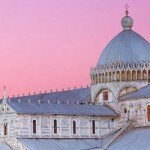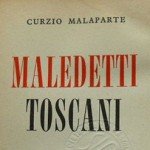I must confess that Halloween is becoming more and more popular in Italy. And I am fascinated by the whole “mystery” part of it, but much less by the costume parties, which remind me a bit too much of our carnival.
In Italy, we celebrate Ognissanti or simply I Santi (All Saints’ Day) on November 1st and I morti (All Souls’ Day) on November 2nd. Only the former is an actual holiday. Traditionally, this marks the beginning of the olive harvest in my family: starting November 3rd, we all spend a few hours in the olive groves every day, until all the olive trees have been harvested. This year it promises to be a good, “tiring” year, as, contrary to most people in our area, our trees are loaded with hundreds of (still) green and purple berries!
Obviously, Ognissanti, il Giorno dei Morti and Halloween all have roots in some “pagan” festival, promptly substituted with a religious festivity as is common in the history of the Christian church. I think it was Pope Gregory III to pick November 1st for All Saints’ Day in the 8th century, so that it would overlap with the Samhain, the Celtic celebration of the New Year. All Souls’ Day was a later addition. The Abbey of Cluny started celebrating the memory of the dead on November 2nd only at the end of the 10th century was this habit extended to the entire Roman Catholic Church.
All Saints’ Day and All Souls’ Day are celebrated with the family (what holiday is not in this country!?). Ognissanti is a festive day, on which people go to mass and then have lunch together. In Tuscany we celebrate Ognissanti with two typical desserts: Schiaccia dei Santi (elsewhere schiacciata, meaning focaccia) and Pane dei Santi (meaning All Saints’ bread). Schiaccia dei Santi is a type of focaccia and it contains raisins, figs and walnuts. Pane dei Santi is exactly the same, but instead of being crispy and thin, the same ingredients are added to bread dough. Castagnaccio, a delicious cake made with chestnut flour, is often prepared in this time of the year.
On All Souls’ Day, I Morti, people go to the cemetery and pay their respects to their beloved departed ones. Most people who have moved away from the village return for the occasion and bring flowers. The traditional flower for the occasion are chrysanthemums. They symbolize death in our culture, and are always associated with cemeteries and graveyards (so don’t give them as a present!). Il Giorno dei Morti is somehow a sad day, but also a day in which you meet people you don’t often see and get a chance to think about the people who are not here anymore.
Over the last few years, people have been organizing Halloween parties in almost every large town and city. Halloween themed decorations and candies are sold in shops and it’s not uncommon to see people dressed up in Halloween costumes. Every year the Catholic Church does all it can to remind people that Halloween is a “heathen tradition”, but apparently, consumerism is managing to bring back what Celtic people had to give up a few centuries ago.
Some of the Halloween traditions, though, are also popular in Tuscany. I remember carving pumpkins with my grandmother when I was a kid, and putting them on our balcony with candles inside. Pumpkin carving was more a seasonal activity though, rather than being related to a particular day.
I think that, this year, I’ll indulge in some Tuscan Halloween stories anyway… Just because I really like mystery stories!












I was just in Tuscany and was interested to see the small displays of masks. Thanks for the history and background–very interesting!
Thank you Lisa! Yes, this Halloween fascination is a recent thing in Italy. Until 5 years ago, it was practically unheard of: it was something we saw on North American TV shows and movies. Eh well, the globalization has provided us with another good excuse to party! Especially because November 1st is a holiday so people don’t have to go to school or work (unless you are a florist…).
Yes, I have seen the Halloween items in shops and also posters advertising big costume parties in many cities in Italy. It seems a bit odd somehow. Halloween is such an American expansion of an ancient Celtic tradition.
Wonderful site, Gloria. Thank you for your articles.
I loved being in Santa Marguerita on Halloween and seeing the children in sheets with holes cut out for eyes and many witches. But you better have coins or candies in your pocket if you venture out into the piazza or restaurant where the children gather. If you don’t ‘dolcetto, scherzetto’, you will be dusted with flour. It is a different way of celebrating and the piazza and people are covered with white flour and laughter. Very fun and simple.
Very interesting post. Grazie.
Mettero’ il link sulla mia pagina Facebook per i miei lettori.
Please visit: http://www.facebook.com/Italiano.With.Jodina
Auguri,
Jodina of http://www.facebook.com/Italiano.With.Jodina